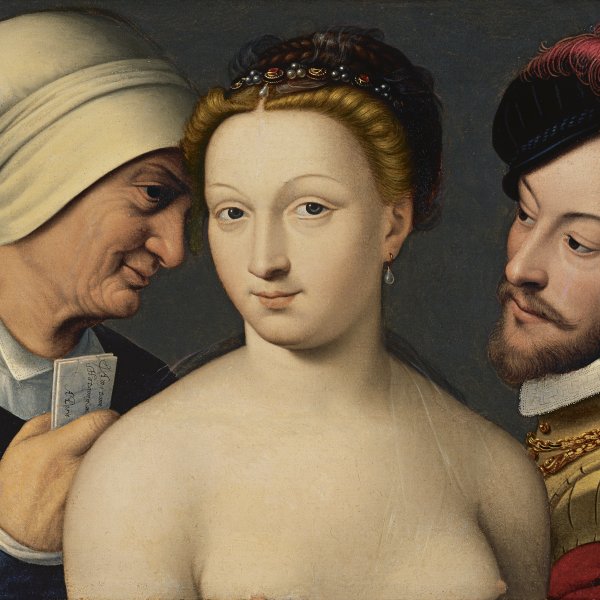François Clouet
Tours(?), ca. 1516-Paris, 1572
François Clouet was the son of Jean Clouet, a painter of Flemish origin active in France. He first trained with his father, from whom he inherited the pseudonym of “Janet” and in 1540 replaced his father as official painter to the court of François I. After the king’s death Clouet continued to work for the royal house of Valois, primarily executing portraits and portrait drawings. His drawings were greatly appreciated by Catherine de’Medici who assembled images of this type in albums. Portraits from this period include those of Henri II, Catherine de’Medici and François I (all Cabinet des Estampes de la Bibliothèque nationale, Paris), which reveal the marked influence of Clouet’s father Jean. His drawings became so celebrated that Pierre de Ronsard and other contemporary poets devoted verses to them, praising Clouet’s skills as an artist. His portraits generally reflect the formal nature of court images and images such as Henri II (Gallerie degli Uffizi, Florence) and Charles IX (Kunsthistorisches Museum, Vienna) have been compared with the work of other great portraitists of the day such as Antonis Mor and Jacob Seisenegger. Clouet’s most famous composition, Diana in the Bath (National Gallery of Art, Washington), probably depicts Diana of Poitiers, lover of Henri II, or Marie Touchet, lover of Charles IX. In this painting Clouet achieved a highly original combination of courtly elements with other, more realistic ones.
Clouet was not only a portraitist but also painted allegorical landscapes such as The Bath of Diana (Musée des Beaux-Arts, Rouen). At the end of his life in 1572 he was commissioned by the Valois to execute a major decorative project for the wedding between Margaret of Valois and Enrique of Navarre (now lost). Clouet was assisted by two of his pupils, Jean Decourt and Pierre Gourdelle.
Clouet was not only a portraitist but also painted allegorical landscapes such as The Bath of Diana (Musée des Beaux-Arts, Rouen). At the end of his life in 1572 he was commissioned by the Valois to execute a major decorative project for the wedding between Margaret of Valois and Enrique of Navarre (now lost). Clouet was assisted by two of his pupils, Jean Decourt and Pierre Gourdelle.




